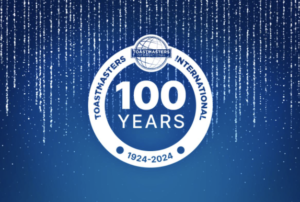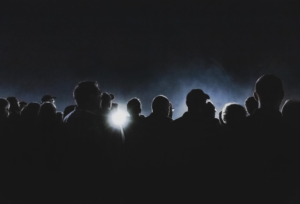By Richard Tardif
When the Canadian Nuclear Safety Commission (CNSC) in 2011 granted a transport license to Ontario’s Bruce Power to ship 16-mothballed generators containing unpredictable levels of plutonium, the proposal was already dead in the water, sort of speak. In the end it was another sign of a mass environmental concern trumping over corporate concern.
The issue began when the generating company Bruce Power announced in 2010 that it planned on transporting the plutonium from its plant near Kincardine on Lake Huron to Sweden, a route through the Great Lakes and Seaway supplying drinking water of 40-million, to be recycled to metal. Eventually, these metals, known as free-flowing metals, would be sold on the market and end up as consumer products such as dental appliances, toasters and other uses.
The leftovers would have to be shipped back to Bruce Power for long-term storage.
The controversy drew some considerable attention, particularly from those living on the edge of the route, as in Kahnawake, a Mohawk Community sitting next to the Saint-Lawrence Seaway, a critical route Bruce Power planned to use in its shipment.
“In making its decision, the Commission considered various issues related to Bruce Power’s qualifications to carry out the proposed activities and the adequacy of the proposed measures to protect the environment, the health and safety of persons, national security and Canada’s international obligations,” a CNSC release reads.
Michael Keegan, Chair of the Coalition for a Nuclear-Free Great Lakes, says it’s been a dog and pony show all along but now the decision has far more reaching concerns and sets a dangerous precedent. “Other companies will be lining up to copy Bruce Power, but even successful why would you do it? We are dealing with waste that will be recycled into everyday metal and eventually sold as products to consumers.”
“It’s impossible to monitor the waste in the products at that point, some of which have a half-life of thousands of years,” said Keegan in 2011.
Bruce Power estimated the steam generators were approximately 90 percent plutonium, particularly plutonium-239 which according to the U.S. Environmental Protection Agency has a half-life of 24,100 years. Once released into the atmosphere and contacted by humans, it generally stays in the body for decades, exposing organs and tissues to radiation, and increasing the risk of cancer.
The consultations may have had no meaning for some, but by issuing Bruce Power a license the CNSC may have had to refuse other nuclear companies in the future. A refusal would have set a precedent.
Under the North American Free Trade Agreement (NAFTA) and the Comprehensive Economic and Trade Agreement (CETA) between Europe and Canada, once the precedent of shipping radioactive waste is established, the Commission may be powerless to limit future shipments.
Trade agreements such as these force countries to provide the same trade opportunities to foreign companies as they provide to their national or local companies. Under NAFTA and CETA, if the CNSC denied approval for future shipments of this nature, foreign companies can sue Canada for compensation including projected profits.
More opposition
Also opposed to the shipment was the Council of Canadians.
“It is unclear how this shipment benefits the general public and how these benefits outweigh the risks to the environment and human health,” said Emma Lui, National Water Campaigner for the Council.
Lui, who attended a 2010 CNSC hearings in Ottawa about the safety of the shipment, said she didn’t feel the Commission was genuinely concerned. “They should be because Bruce Power’s emergency planning is inadequate,” she said. “The 2006 Environmental Impact Assessment did not include a scenario or a response plan for the ships sinking.”
The CNSC did note that an accident would only result in a partial release of 0.132 percent of the total waste. “They only calculated the release for one steam generator and failed to calculate the total releasable inventory for all 16 steam generators,” said Lui.
At the hearing, Lui suggested that the CNSC apply the “precautionary principle” an environmental safeguard upheld in the 1992 Rio Declaration and recognized by over 20 international treaties and agreements.
The Principle gives a general description saying, “Where there are threats of serious or irreversible damage, lack of full scientific certainty shall not be used as a reason for postponing cost-effective measures to prevent environmental degradation.”
Still, the CNSC issued a one-year license, but several hurdles still needed to be cleared before setting sail to Bruce Power’s controversial plan.
Some U.S. communities needed to issue permits and Canadian Transport needed to be satisfied that the vessel shipping the waste can safely navigate the route including the St. Lawrence Seaway, as does the U.S. Department of Transportation’s Pipelines and Hazardous Materials Safety Administration. Norway, Denmark and the destination point in Sweden needed to approve, and had not begun their own hearings at the time.
“Although some of these may normally be a matter of rubber stamping the permits, but since there is opposition, some governments may be forced to open the issue to the public,” said Lui.
Widespread criticism of Bruce Power’s plan began after the generating company reneged on its 2006 Environmental Impact Assessment to store the junky generators at their site until 2043, and underground thereafter.
Instead, in October 2009 Bruce Power announced a new plan – saving waste storage charges by using a Swedish company to decontaminant radioactive materiel and recycle it into the world’s scrap metal supply. Bruce Power then applied for a special license from the CNSC because the steam generators failed to meet CNSC’s own Packaging and Transport of Nuclear Substances Regulations. Hearings then took place on September 28 and 29, 2010 and in October the Commission made a call for submissions from concerned organizations.
Despite the process of hearings and submissions and the growing controversy, the CNSC issued a license. In the meantime, Bruce Power was saying the approval speaks for itself in terms of risk, and the company was preparing to launch a second promotional campaign similar to it’s website campaign launched in September 2010.
“We have always believed the right thing to do is reduce our nuclear footprint,” said then company spokesperson John Peevers. “It is their role to protect safety and take a long, hard look at this,” Peevers said. “They examined various scenarios and have found there is no risk to the public.”
Meanwhile, opponents to the shipment proposal continued to argue it would be risky for Ontario’s Bruce Power to move the radioactive waste across Canada’s fresh water systems, and it would open them to becoming a permanent corridor for the transporting nuclear waste and other dangerous substances.
Communities along the St. Lawrence Seaway, including Kahnawake, Montreal and surrounding centers would have the barges carrying the waste pass 30 metres from their communities. “There have been a dozen times where I’ve heard two ships grinding together as they pass one another through the seaway,” Clinton Philips, then a Mohawk Council Kahnawake Chief, the Chief holding the environmental portfolio at the time.
Fears were warranted, especially near the Kahnawake territory. Days before the CNSC hearings a 200 ton fuel leak from the Canada Steamship Lines freighter The Richelieu ran aground in the St. Lawrence Seaway south of Montreal. Kahnawake and its neighbouring communities feared a similar accident during nuclear shipments.
“This is not just a Kahnawake issue,” said Philips. “We would all be affected by an accident.”
The Canadian Environmental Law Association and the Sierra Club
The Canadian Environmental Law Association and the Sierra Club Canada then announced joint legal proceedings in the Federal Court of Canada to stop the radioactive shipment. “Major policy changes in the handling of nuclear waste should not be made in an ad hoc fashion,” said John Bennett, Executive Director of the Sierra Club Canada. “Municipalities, First Nations, organizations and individuals all demanded to be heard on the shipping of 1,600 tons of nuclear waste through the Great Lakes and the St. Lawrence River, but their concerns were ignored.”
The non-profit organization the Canadian Coalition for Nuclear Responsibility (CCNR) was hoping the “junk” to be permanently stored at the Bruce Power site. According to Dr. Gordon Edwards of the CCNR this would avoid setting future precedents in the transfer of nuclear waste across the Great Lakes.
“I think it’s more of establishing a precedent that (nuclear power plants) can ship any number components, of any number of descriptions, any time they like, not necessarily over seas but throughout the Great Lakes.” Edwards, a staunch opponent of the Bruce Power proposal believes the CNSC delaying their decision because the shipment had become so controversial.
“I think they, the Commission, were being very careful and they know their credibility was being exposed, in a way the whole world was watching, from Senators and mayors and First Nations groups so they were being very careful.”
Public opposition, in the end, sunk the proposal. Bruce Power’s new spokesman James Scongack said the nuclear facility “did not seek to renew” the licence after it expired early in 2012 but that the company remains committed to finding a way to recycle its waste.






